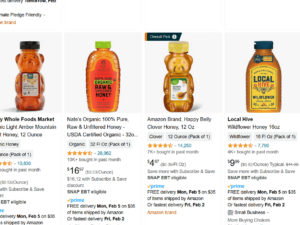
Why Raw Honey is More Expensive than Processed Honey
While there is much overlap in prices, on average, raw honey tends to cost more than processed honey. Since raw honey is simpler to produce,
The management team at Wendell Estate and Wendell Honey Farm has 200+ years of combined honey and beekeeping experience, also including an MD degree among other science and health backgrounds. Send us your questions on honey, beekeeping and health and we’ll do our best to answer them! Any questions that lead to a FAQ post will earn the inquirer a coupon for 50% off their next order from our estore (up to $123 savings).

While there is much overlap in prices, on average, raw honey tends to cost more than processed honey. Since raw honey is simpler to produce,
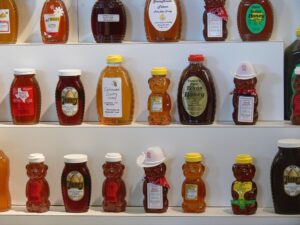
We get this question a lot. Some people wonder if we’ve added colouring the honey or done something else to whiten the colour (we emphatically
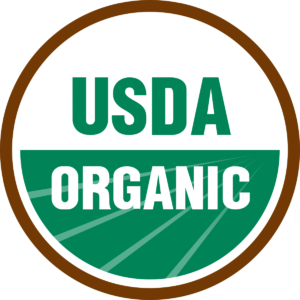
Background In my previous deep dive blog attempting to answer the question “What is organic honey?” I stated that the USDA does not certify any
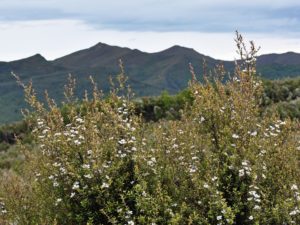
A look at Manuka honey’s value as a health food In recent years honey has seen an upswing in popularity as a healthy alternative to
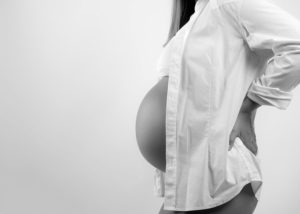
Yes, you can! Raw honey is at least as safe as pasteurized honey. Unlike raw dairy, raw meat or raw vegetables, you can’t get infections
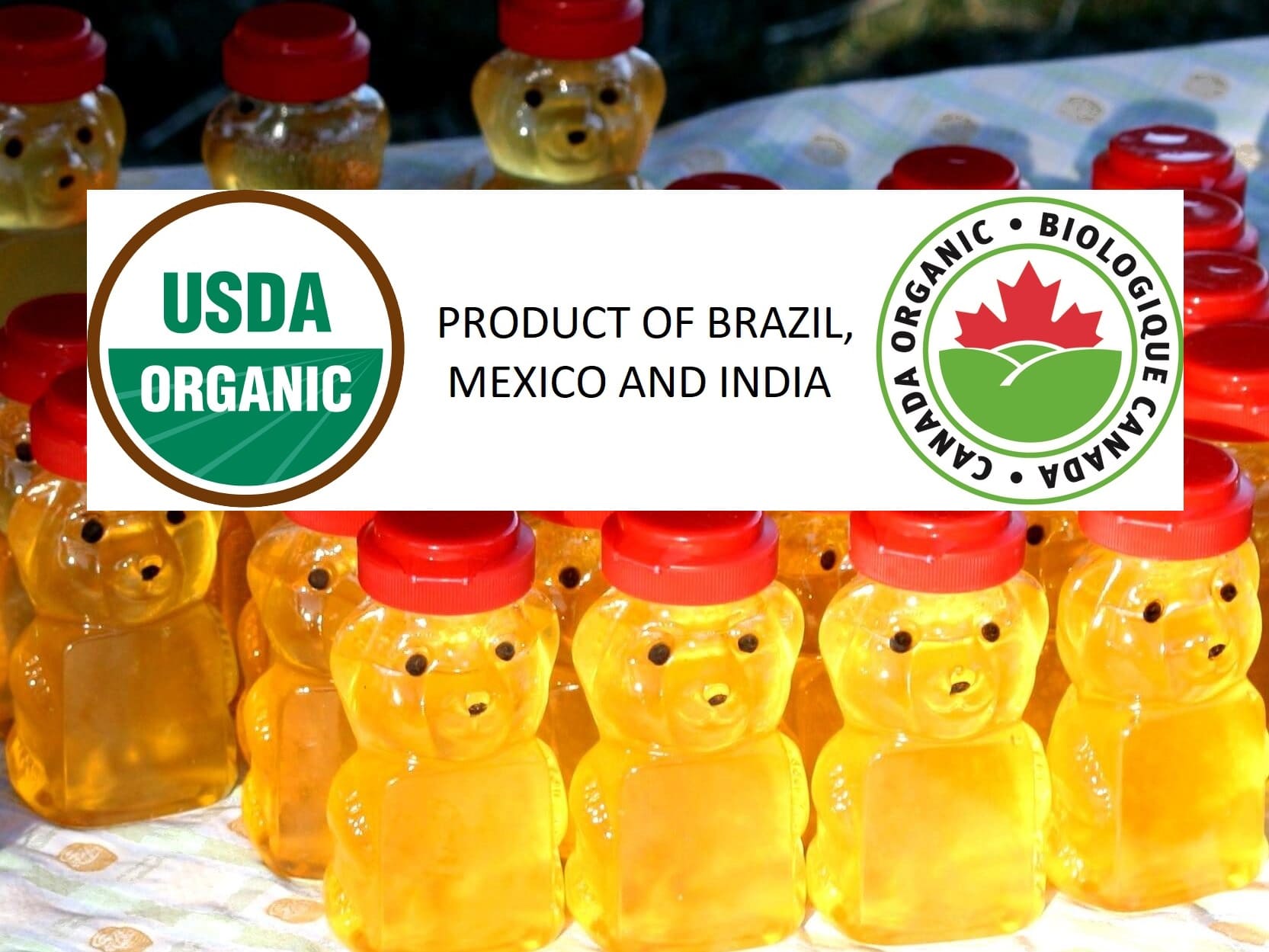
Many of us choose to pay a little more for certified organic foods when shopping for groceries. For some, this is a choice for personal

A great question! I got this from a podcast interview with UK Honey Sommelier, Sarah Wyndham Lewis (I want to post a link to the
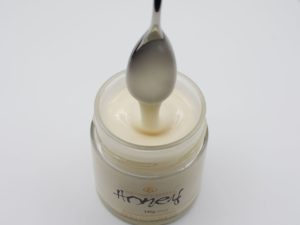
The short answer: soft-set honey is honey that has crystallized into a semi-solid form, as opposed to the initial liquid form of natural honey. The
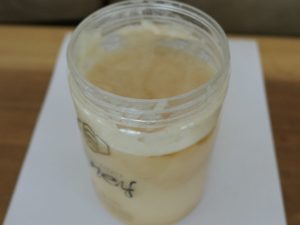
The good news is that raw honey is an exceptionally safe natural food and can withstand months or even years of storage at ambient temperatures
The only reason we can think of is that the haters aren’t bothering to post reviews. Well, that and the fact that we sell only world-class honey.
Only Manuka honey has a UMF rating as only Manuka is known to contain methyl glyoxal (MGO), an organic compound which has anti-bacterial properties. Specifically MGO in Manuka honey means that Manuka honey can be sterilized and still retain strong antibiotic properties, making it the ideal honey for sterile wound dressings. It is worth noting that ALL raw honey has anti-bacterial properties similar to Manuka honey antibiotic properties.
OK, in some studies Manuka honey has somewhat stronger antibacterial effects than “regular” or “pasture” honey. But if those effects were important, it would be like your doctor prescribing you 1.2 antibiotic tablet pills each time rather than a single pill. And do you really want to be ingesting a bunch of antibiotic constantly? The importance of the antibiotic properties of honey are:
1) it means honey doesn’t spoil and that you can’t get sick from eating rotten honey,
2) see #1, and
3) honey has been used as a natural wound dressing throughout history prior to the invention of antibiotics to prevent wound infection.
The difference between Manuka and most other honeys is that when most types of honey are heated for pasteurization or sterilization, the enzymes break down and the honey loses much of its anti-bacterial properties. In addition to the anti-bacterial properties, raw honey contains a whole bunch of different enzymes that help confer its anti-oxidant, anti-fungal, anti-viral, anti-inflammatory, anti-hypertensive, pro-digestive, pro-sleep, anti-weight-gain, and pro-athletic-performance properties (with studies ongoing to investigate possible anti-cancer properties). These properties are lost or greatly diminished in pasteurized or sterilized honeys, including sterilized/pasteurized Manuka honey.
So, if you’re looking for a sterilized wound dressing, Manuka is the best choice. If you need a systemic antibiotic to cure an infection, we would urge you to consult a physician and get a prescription for an antibiotic. If you want to eat a delicious food with many great health properties, choose your favourite raw honey! Eating any real, raw honey will have a superior health-benefit profile to sterilized or pasteurized Manuka honey (not to mention the fact that up to 80% of Manuka honey may not be Manuka honey).
When it comes to honey that you will eat, we think choosing real and raw honey is much more important than any specific floral source. If you choose honey that you like to eat, you will probably eat more of it, and less unhealthy processed sweeteners. For honey to eat, we think HMF is much more important that UMF.
This is a common question answered in many places online. Unfortunately, most of the answers miss the mark in some way or another. I will try to dispel some of the most common storage myths about raw honey.
One of the commonly quoted factoids about honey is that 3000-year-old honey was found in the Egyptian pyramids that was still edible. Sometimes this is even paraphrased as variations on “Even if honey had been sitting on your shelf for 2,000 years, that honey would still be as good as the day you opened it.” Definitely not true.
The urban myth of honey being perfectly edible after over 3000 years appears to date back to a 1913 article in National Geographic magazine, and affirmed by the Smithsonian Magazine in 2013. Peter Borst writes in the American Bee Journal that examination by a pyramid sample of “honey” by a chemist in 1926 “found the jars to be practically empty, save for a trace of dried material stuck to the inside. Tests on the material were unable to determine the nature of the substance, other than it was not completely soluble in water, which honey would be.” In the one sample that has good evidence of being honeycomb (stored since 1350 BC), the honey is described as being reduced to a “dark brown mass”. Of course, I have not tasted this honey (and wonder if anybody has), but it doesn’t exactly sound fresh and delicious.
While honey is an exceptionally stable and well-preserved food naturally, it does lose its freshness over time, depending on storage conditions. When honeybees work foraged nectar into honey, they add enzymes to the nectar while digesting and drying it. When the final product, mature honey, is ready, the worker bees seal it in honeycomb with a water-tight wax cap. Honey is highly hydroscopic, absorbing moisture from all but the most arid of environments. Raw honey often contains harmless, ubiquitous yeasts, that can cause honey to ferment. While the moisture content in naturally mature honey is too low for yeast fermentation, the moisture content of honey exposes to ambient air will normally rise over time, eventually allowing the yeast to slowly start fermenting the honey. This usually takes weeks to months, and the resultant fermented honey poses absolutely no health risk, but most people don’t enjoy the sour taste of fermented honey. Honey can even absorb moisture through seemingly air-tight plastic containers. For long term storage, airtight glass containers are preferable to plastic.
Even eliminating the possibility of fermentation by preventing the honey from absorbing moisture from the environment (I can believe that the Egyptian pyramids may be dry enough to maintain the honey at moisture contents too low to permit fermentation), honey does lose its freshness over time in a heat-dependent fashion. The warmer the temperature, the more rapidly the honey will deteriorate. An objective measurement of heat exposure over time, and therefore a proxy measurement of freshness, is the 5-hydroxymethylfurfural (HMF) content of the honey. HMF content of honey is commonly measured to determine whether of not the honey has been heated or pasteurized or exposed to a lower level of warmth over a long period of time. More on honey aging and freshness in this post.
Of course, HMF testing is not something you can do at home. Fortunately for our Wendell Estate Honey customers, our white honey has a kind of built-in freshness indicator: the colour. Fresh Wendell Estate Honey is a very light colour, almost white (there are small variations since we don’t batch the honey). As it loses freshness, the colour darkens. There is absolutely no problem with eating the honey after the colour has darkened significantly, but it won’t be quite as fresh as when it was white. It will still be as fresh or fresher than almost any other honey on the store shelf. Observing this colour change does allow us to make some basic guidelines about how long our honey can be expected to stay fresh: roughly 3 – 6 months at room temperature (20 – 25°C / 68 – 77°F), 18 to 24 months in the refrigerator, and at least 5 years in the freezer. We could expect this to apply to other raw creamed or soft-set honeys (for a definition see FAQ “What is soft-set honey?”) for a definition of “soft-set”), but the fact is that most other honeys on store shelves spent months in a bulk drum at ambient temperatures before even being packaged into the commercial jar. The exception is honey packaged by the beekeeper: those honeys are usually packaged fresh.
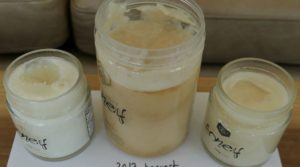
I should mention storing liquid raw honey in the freezer or refrigerator may not be a good idea. Soft-set or creamed honey can be refrigerated or frozen with no change in the texture or properties of the honey. Raw liquid honey mostly tends to granulate (crystallize) over time and the cooler the temperature the more rapidly they will granulate. Granulated honey is generally somewhat inconvenient to use as it is quite hard with a granular texture (unlike soft-set honeys which are already crystallized, but with a softer smoother texture). This is probably the reason that many recommend not storing honey in the refrigerator – they are assuming that your honey is liquid, not creamed or soft-set. If your liquid honey does granulate you can always return it to the liquid state by placing the jar in a warm water bath of 30-40°C / 86 – 104°F.
Finally, it is often recommended to store your honey in a dark place. Light definitely does cause honey to lose its freshness. However, my home experiments on our honey showed light to be much, much less of a factor in deteriorating freshness when compared with temperature. Dark storage is ideal, but I don’t worry much about light personally.
Every drop of the original WEH is harvested from our honey farm, Wendell Honey, by us and then packaged fresh on location immediately after extracting the honey from the honeycomb. Nothing is added and nothing is removed from the honey. It naturally micro-crystallizes (granulates) in the jar. No honey from any other farm is used for WEH.
In 2018 we partnered with friends of ours that have their own honey farm in a remote area of Saskatchewan to offer Wendell Estate Organic Honey. Every drop of WEH organic comes from their farm. We coordinate closely with them to pick up their organic honey from their farm and package it fresh on our farm. We never mix the honey from the two farms.
The obvious difference between the original and the organic honey, aside from the farm it comes from, is the Canadian Organic Regime (COR) certification. There are strict regulations about organic beekeeping. (More details on organic certification of honey in this blog, and an update specific to USDA Organic honey certification here). However, meeting these conditions does not alone qualify the honey as organic. Bees forage where they will, flying up to several kilometers to find nectar. COR regulations state that no prohibited substances can be present within a 3 km radius of the beehives. On the flat prairies, a 3km radius could include all or part of 56 or more quarter-section fields! The crops and farming practices on any one of these fields can exclude the honey from organic certification, whether the bees actually gathered nectar from that field or not. The largest qualification for organic certification of honey – the agricultural practices in the surrounding area – are completely out of the beekeeper’s control. This is one main reason why authentic COR-certified organic honey is so rare.
In Canada, not all organic honeys are equal. Closer scrutiny reveals that many Canadian brands of organic honey import their organic honey, with Brazil being a common supplier of organic honey. Without getting into differences of organic certification and rigour between different countries, it is worth noting that organic honey from Brazil fetches a lower price on the global market than non-organic Canadian honey. Unfortunately, like almost any certification, there are also Canadian organic certifying companies that sacrifice rigour and validity for profit: some “organic” honey producers in Canada certainly don’t meet the COR criteria. For Wendell Estate Organic Honey, both the producing farm and our packaging facilities are certified by Procert, one of the most rigorous and reliable organic certification companies in Canada.
Another factor worth paying attention to is whether the honey is raw and unfiltered or processed. Real, raw, unfiltered, unprocessed non-COR-certified honey will confer more health benefits than organic-certified honey that has been pasteurized and ultra-filtered.
As for the honey itself, WEH and WEH Organic are very similar. Both have a similar white colors, silky-smooth textures and delicate fresh flavors. Both are pure, entirely natural, additive- and antibiotic-free, completely raw, unheated and unfiltered prairie-blossom honey: Sweet healthy goodness! We invite you to try both of our honeys and choose for yourself.
Note: due to limited availability, we do not offer WEH Organic honey for sale directly from our website. If you would like to order WEH Organic honey, please email us at info@wendellestate.ca.
We recommend that you keep an amount of honey that you will use within 2-3 months at room temperature so that the honey is soft and spreadable. Honey that you expect to keep for more than 2-3 months should be stored in a sealed container in the refrigerator (good), or freezer (best).
We package our honey fresh on our farm, and then allow the honey to naturally crystallize in the jar over several weeks, just as it would in a Canadian prairie beehive. After it sets up, the honey is transferred to frozen storage where it will maintain its freshness indefinitely. When Wendell Estate Honey leaves our storage facility it is as fresh as the day it was harvested.
Raw honey does not have a “best before” date. How long the honey stays fresh is entirely dependent on storage conditions. Our soft-set raw honey will remain delicious at room temperature (20-25°C) for a few months. However, the honey will very slowly darken over time (2-3 months or more) at room temperature. The colour change itself does not affect the taste or texture of the honey. However, raw honey often contains natural yeasts that can cause honey to ferment with continued exposure to warmth and humidity. The rate that this happens depends on temperature and humidity and varies from as rapidly as several weeks at 30°C to a few months for an open jar at temperatures of 20-25°C to many months to years in the refrigerator (~2°C – 5°C) to indefinitely for a sealed jar in a freezer (<0°C).
The process is slower if the jar is unopened as we ensure that any honey we package under the Wendell Estate Honey brand has a moisture content that does not permit fermentation to take place. However, honey readily absorbs moisture from the air and, unless you live in a desert, the moisture content of the honey does go up honey exposed to normal household air. Honey can even absorb moisture very slowly through the PET plastic or through the seal of the glass jars. Therefore, we recommend storing unopened jars in a refrigerator or freezer: the cold, dry conditions will prevent colour changes, absorption of moisture and possible fermentation.
Fermented honey can be identified by a darker colour, foamy bubbles on the surface, a “yeasty” odour and a sour taste. Note that eating fermented honey poses absolutely no health risk, but many people find the sour taste unpleasant.
If you find that your honey is too hard, you can stir (knead or “disturb”) it with a strong spoon or butter knife for a moment and it will become much softer (click here for demonstration). Or you can warm it gently by placing the jar in a warm (~ 30°C) water bath for about 30-60 minutes.
Warming our raw honey above 30 – 35°C will cause it to melt (liquefy) into a translucent liquid (liquefying depends on both temperature and exposure time: the honey will likely liquefy if exposed to 35°C for an hour or more, much more quickly at 40°C). If the liquid honey cools to room temperature, it can gradually re-crystallize into a harder, courser, granular form, losing the WEH signature smooth texture and becoming inconvenient to use. This honey can be re-warmed to a liquid if desired.
Finally, as honey is heated above 40°C, the natural enzymes that give honey many of its health benefits will begin to breakdown. How much the health benefits are decreased depends on the maximum temperature the honey has reached. This is one reason raw, unheated honey is healthier (and tastes better) than pasteurized honey. Keep in mind that even though the health benefits of raw honey are at their maximum if the honey has never exceeded 40°C, any real, natural honey is always a much healthier choice than processed sugars.
Yes, you can certainly re-freeze your soft-set honey after opening the jar, or any time. If you eat your honey quite slowly and don’t expect to finish the jar within two or three months, then keeping the amount you expect to eat in a couple months at room temperature in your kitchen or pantry, while freezing the rest is a great way to keep your honey fresh, delicious and preserve the maximum health benefits. Unlike, say, meat or fish, you can freeze the honey and warm it to room temperature as many times as needed without damaging the honey in any way. If you’re buying directly from our estore, that can allow you to save money by buying larger/more jars than you normally would consume in a few months.
For example, if you don’t eat much honey and expect that your 1kg (2.2lb) jar might last a year, you could put about ¼ of the honey (250g / ½ lb) into a different jar for daily use in your kitchen and put the original jar with ¾ honey into the freezer. When you finish your “kitchen honey” simply let the freezer jar warm up for a day or two, scoop out the desired amount and re-freeze the remainder again until you’re done with the jar.
I should just mention that if the honey has melted into a liquid form, whether you freeze it or not it will re-crystallize into a harder, more granular form, losing the Wendell Estate Honey signature smooth texture. Our soft-set honey becomes liquid when it is exposed to temperatures above about 30 C for long enough. Sorry, I can’t give timeframe for the melting process. It depends on temperature and humidity etc – several hours in normal humidity at 30 C will probably melt the honey and it melts faster at higher temperatures. Wendell Estate Honey is carefully selected honey that crystallizes fresh in the jar under controlled conditions. It only crystallized this smoothly the first time, when it’s fresh. The melting and recrystallization affects only the texture: The honey is perfectly good to eat, though you may want to keep it warmer if it has recrystallized to keep it softer or liquid. My grandmother used to keep a small jar of honey on her propane stove where the pilot light warmed it just enough to keep it liquid. One thing to note that over months at temperatures around room temperature, raw honey gradually deteriorates, with flavor changes and some loss of health benefits. If you keep your honey warmer to keep it liquid, this process will happen slightly faster. You can read details about honey shelf-life, freshnes, and aging here.
If your honey is at room temperature and seems a little too hard, disturb or stir it with a spoon or a knife and it should become more spreadable. Here’s a quick demonstration (click). You can also warm the honey gently in warm water (25-30°C: 77-86°F). Unless you will use all the honey as liquid, be careful not to melt the honey into a liquid, which occurs at around 35°C (95°F) depending how long the honey is exposed to the heat (details here).
How long your raw honey will keep fresh and delicious depends entirely on how you store it. The Canadian government does not require either a “Best Before” date or an “expiry” date on honey and we do not label our domestic honey with either of these dates. Raw honey can keep indefinitely if stored properly. However under sub-optimal conditions (warm/hot and humid), raw honey can ferment within weeks. Please see our storage instructions (here) for a detailed discussion on raw honey storage. There’s more details on honey shelf-life, freshness and aging in this article.
This is an important question for the health-conscious consumer as the health benefits of raw honey are superior to honey that has been heated or pasteurized. Heating honey beyond about 40°C (the internal temperature of a healthy bee colony’s brood chamber in summer is 32-36°C, so 40°C is commonly used as an upper limit of temperature exposure at which honey may be considered “raw”) causes many of the natural enzymes conferring honey’s healthy properties and health benefits to break down. Most honey will crystallize/granulate over time, so honey packagers usually need to heat the honey to some degree to get it from the bulk drums into the retail jars. The warmer the honey, the less viscous it is, and the easier it flows into the jars, providing an incentive for packers to heat the honey beyond the 40°C usually considered the maximum temperature at which the honey can be claimed to be “raw”. It can be difficult for a consumer to tell if honey labelled as “raw” is actually raw. A google search can turn up several methods, but none of these are reliable for all kinds of honey. A honey connoisseur may detect a “burnt” flavour in pasteurized or heated honey. This burnt taste usually indicates higher levels of hydroxymethylfurfural (HMF), a compound formed when honey or sugars are exposed to heat. The level of HMF in honey can be measured by a laboratory and used as an indicator of the total history of heat exposure of that sample of honey. A common upper limit for HMF level for honey to be considered as raw is 15 mg/kg.
In addition to being an indicator of heat exposure, HMF may be unhealthy if consumed at very high levels.
Because we package Wendell Estate Honey fresh on our farm, it never goes through a bulk drum, and no heating is required to package it directly into the jar. The HMF levels of Wendell Estate Honey are very low, of course, proving that it has never been heated. Our HMF levels have been between 0.5 and 0.7 mg/kg when measured by independent laboratories, much lower than the 15 mg/kg limit for raw honey, proving that our honey is the freshest honey that you’ll find outside a beehive.
Yes! People use honey on their skin for a wide range of reasons, from treating skin conditions like sebhorrea, dandruff and acne to preventing wound infections to keeping skin young and wrinkle free. Despite all the marketing, you don’t have to spend a small fortune on manuka honey for your skin treatments. Any raw honey exerts emollient, humectant, soothing, and hair conditioning effects, keeps the skin juvenile and retards wrinkle formation and regulates pH. You will want to mix the honey with some oil or water at a minimum to help with skin application.
Wendell Estate Honey is certainly natural and raw enough to make a good skin treatment, but you could get similar results from a cheaper raw honey (as long as it’s authentic raw honey). Here’s a brief video of Carol using raw honey with olive oil as a facial skin health/youth maintenance treatment.
I (Jeremy) have also used raw honey personally as a treatment for infrequent episodes of sebhorrhoeic dermatitis. It’s messy putting honey on my scalp, so took some planning and getting used to (i.e. i did it 30-60 minutes prior to showering and washing the honey out of my hair), but they effects were much more rapid (noticeable improvements after 1-2 weeks with full resolution in less than 4 weeks) than any of the over-the-counter and dermatologist-prescribed treatments I had used previously.
More on this in our raw honey health benefits page.
That’s a tough question! We like to think that our honey can hold it’s own against other excellent honeys from around the world. Wendell Estate Honey is the only honey from North America to have won both a gold medal at the World Beekeeping Awards and a Platinum at the London International Honey Awards. That being said, “best honey” is a matter of personal preference, and we wouldn’t be so bold as to claim that our honey is the best. We often enjoy different honeys from across Canada and around the world, and encourage you to do the same. Like teas, wines, cheeses, coffees, whiskeys, and even potatoes (there are over 4000 varieties of potatoes!), we think there isn’t a single best honey for all occasions. We only encourage you to purchase real, pure, raw honey. Buying from a trusted producer is always a good choice.
One of the hallmarks of Wendell Estate Honey is its brilliant white colour. Some customers have asked us what we add to the honey to make it so white. We can’t emphasize enough that we add NOTHING AT ALL to our honey: the white colour is entirely natural. I’ve expanded the explanation of why our honey is so white on this post.
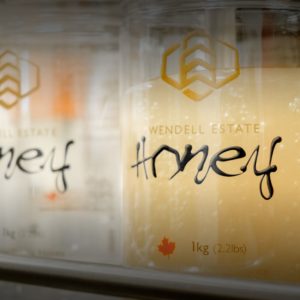
Freshly extracted “water white” Wendell Estate Honey filling jars during harvest
Many people are familiar with either big brand processed honey found on supermarket shelves, or liquid honey fresh from a beekeeper, both of which are usually a yellow-amber to dark brown colour for slightly different reasons. Our honey is indeed a more familiar yellowish amber colour in its liquid form when we extract it from the honeycomb. Even in the liquid form, our honey is considered “extra white” or even “water white” on the industry standard honey colour scale, usually expressed in mm on the Pfund scale. The curious can read this post describing Pfund honey colour ratings, and here is a NYT article discussing honey colours.
We select our most subtle and delicately flavoured honey for our Wendell Estate jars. This usually corresponds to a colour of “water white”. Many factors influence the colour of the honey, the largest being the floral source. Other factors that can darken the honey include local climate during honey collection and maturation, old, dark honeycombs in the beehive, storage after honey extraction and probably even the health of the hive and the local soil composition.
Also note that as honey naturally crystallizes (granulates) from its liquid form the colour naturally changes, analogous to the colour of water changing as it crystallizes into ice. We allow our honey to naturally crystallize in the jar before selling it. Most liquid honeys naturally crystallize over time, with the rate depending on many factors, again with the largest being the floral source.
You shouldn’t give honey to any infant or baby less than 1 year of age. Below about 9 months of age, infants intestines are not fully colonized by normal beneficial bacteria and there is a risk of infant botulism if these babies and young infants consume honey. Bacteria cannot survive in honey, but inactive C. botulinum spores, which occur almost everywhere in nature, can be present in honey. There is a possibility that these spores could grow in an infant’s intestines and cause infant botulism. Note that C. botulinum spores are equally present in pasteurized and raw honey – the pasteurization process does not kill the spores. Also note that infant botulism is different from other illnesses related to C. botulinum that can affect adults and older children. You cannot contract infant botulism if you are older than one year old (this includes pregnant women). Adults can, however, get food-borne botulism. This is a possibly life-threatening form of food poisoning that results from eating foods contaminated with botulinum toxin (the same toxin used in botox injections) that is produced by actively growing C. botulinum bacteria (Not spores!) thriving in spoiled food. Since C. botulinum bacteria cannot grow in raw honey, you cannot get food-borne botulism from honey.
We don’t batch or blend our honey, so the color depends on many factors, the biggest being the exact blend of flowers that contributed to the honey in your jar. All of our Wendell Estate Honey is naturally a very light, almost white color, with small variations. However, if stored in a warm environment, over time (weeks to months depending on the temperature) the color will darken. The honey will retain its white color for many months in the refrigerator and years (to indefinitely) in the freezer. Note that the color change itself does not affect the flavor or texture of the honey – if it’s not fermenting it should be perfectly enjoyable to eat. While honey does lose some health benefits and flavour as it ages, I personally have no problem eating honey Wendell Estate Honey that’s darkened slightly over months in the kitchen (in the rare instance a jar lasts months). Darkened honey that hasn’t fermented is still great for baking, since you’ll be cooking the honey anyway.
If you are ordering from our website, shipping is included. The price you see is the price you pay to receive your gourmet raw honey to your address.
For wholesale orders we will provide a shipping quote for you. All upcharges by the freight company are the responsibility of the customer.
With all the fake and adulterated honey in the market (honey is the 3rd most adulterated food in the world!), it’s no wonder some customers are vigilant!
Fortunately, while our website materials (brand name, pictures and text) do pop up all over the place online connected with a wide range of honey brands and other products (including toothpaste! – no, that toothpaste has nothing to do with us), we have not yet seen a WEH-branded jar of knock-off honey. But please get in touch with us if you think you have a fake jar of WEH.
While we do occasionally have major changes to our packaging, for example we switched to round jars for our 250g jars after we used the last of our hexagonal jars, more often we have minor tweaks, intentional and unintentional. Recently some customers have received 1 kg jars that are missing the familiar Wendell Estate honey bee logo on the lid of the jar and have worried they may have purchased fake or copy-cat Wendell Estate Honey. Here’s the detailed answer to this issue that can hopefully re-assure you if you happen to have one of those jars:
We did receive a large shipment of lids for the 1 kg jar in which a fraction of the lids were missing the regular gold Wendell Estate Honey Logo (“bee logo”) on the lid. This was not an intentional design change, but rather an unexpected printing issue. Rather than return the un-printed lids thousands of kilometers to have the logo printed on, we made the decision to use the lids “as-is”. We can re-assure our customers that if you did happen to purchase a 1 kg jar of Wendell Estate Honey that is only lacking a bee logo on the top of the lid, that the honey inside the jar is the same as the rest of our jars that received normally-printed lids. Likewise, the lid quality is not affected: this is purely a lid logo printing issue.
If in doubt, please do get in touch with us. A receipt and a photo of the jar front and jar bottom with the lot number are useful.
We, at Wendell Estate honey, offer you prairie honey, as it is, straight from the beehive to you.
We do not mix or batch our honey. We take the honey from the beehive, extract it from the honey comb, spin and strain off the wax, and get it into jars. It is a living, straight-from-the-farm food so will have some variance from lot to lot and from year to year. If your honey is at room temperature and seems a little firm, disturb or stir it with a spoon or a knife and it should become more spreadable. Here’s a quick demonstration. You can also warm the honey gently in warm water (25-30°C: 77-86°F). Unless you will use all the honey as liquid, be careful not to melt the honey into a liquid, which occurs at around 35°C (95°F) depending how long the honey is exposed to the heat.
As explained above, we generally do not put best before dates on our jars, especially the jars intended for sale in Canada or the United States. However, some North American customers have occasionally received a jar that does have a best before date on the jar and ask why. Some North American retailers of our premium raw honey also require us to put a best before date on the jars
In the Canadian market, honey is not required to have a best before date. When we export our honey to some countries we are required to put a best before date on the jar. Sometimes we over-print for a particular order and those jars may be shipped to domestic customers. The best before date is only valid if storage conditions are strictly adhered to. You can read detailed storage instructions for soft-set raw honey here.
Wendell Estate Honey is strained to organic standards so may have small pieces of beeswax, clumps of bee pollen or propolis. Bee pollen is healthy: it is collected from flowers and contains natural vitamins, proteins and minerals. Bee propolis is made by bees from tree and plant resins (black poplar in our area) and used as a glue by bees to strengthen their hives and plug drafty holes. Propolis is commonly collected, sold and eaten as a health supplement. Beeswax simply passes harmlessly through your body without being digested.
Absolutely! This was an important factor for us in choosing our jars and jar suppliers. As rural agriculturalists that spend much of our time in nature, sustainability and protection of the natural environment is of paramount importance to us.
Both our glass jars and our PET 1kg (2.2lb) jars should be readily recyclable by your local recycling program. Please do not send us your used jars. As a small, farm-run company Wendell Estate Honey does not its own have recycling facilities: We would simply have to deposit them with our local recycling program.
Our office manager, Ashley, “upcycles” used Wendell Estate Honey jars into her beautiful Moonflower beeswax candles, made with pure beeswax from our farm.
Because of the quality of the jars, many of our customers keep the jars for use after the honey is done rather than taking them to a recycling center.
I use the used glass jars for making homemade salad dressing and as a substitute for Tupperware containers if I need to store small amounts of food in the refrigerator or freezer. I also use a couple for coins, pens and other small desktop items.
Isabel uses the jars for jam like this homemade rhubarb jam with honey or other jams, especially freezer jams. She also uses them to store single servings/small amounts of berries in the freezer. She freezes the berries on a sheet and then puts them in used WEH jars in the freezer; convenient if you want a single serving of berries or if a family is putting berries on yogurt or muesli or using them in a shake or smoothie later. Isabel also uses them for storing bulk-quantity nuts as nuts (like honey) stay fresher in the freezer.